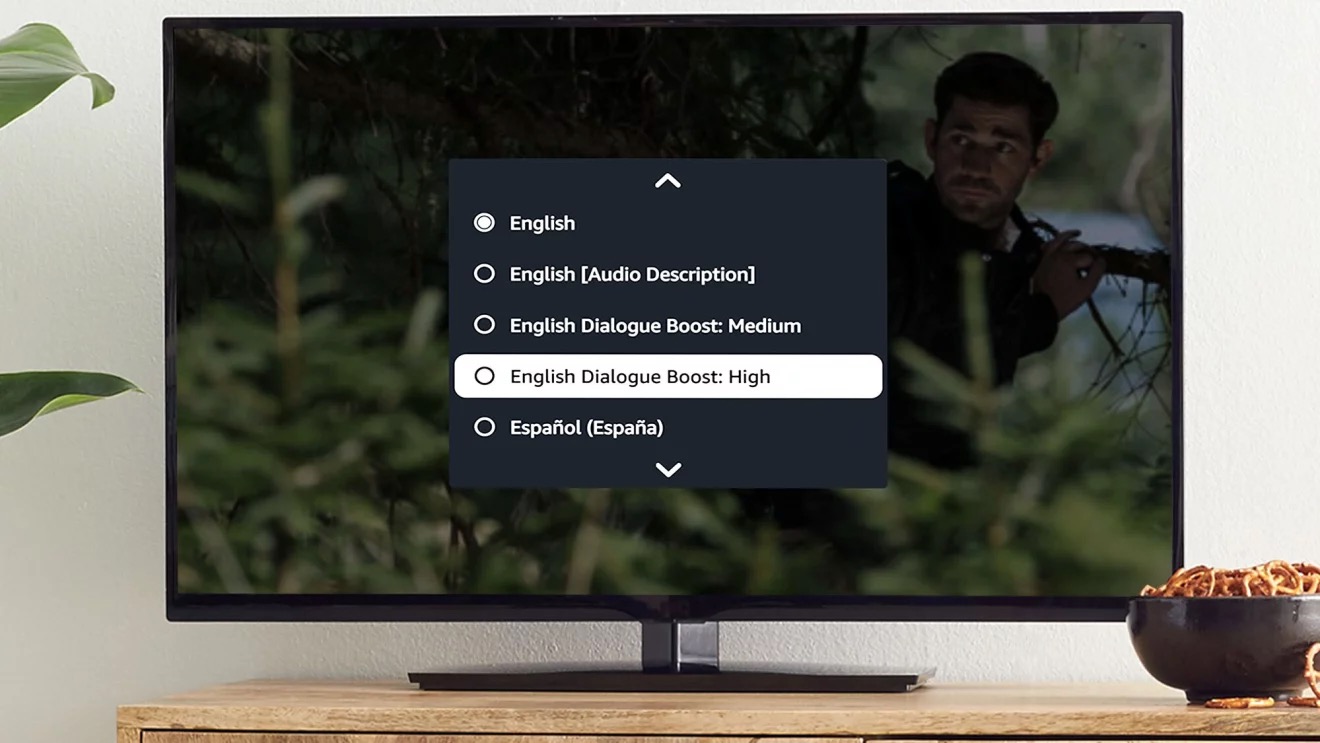This hidden Prime Video feature has transformed my streaming – Netflix and Disney+ need it now
Instantly improve your audio

When you're watching a high concept drama or raucous comedy, nothing kills the moment quite like having to ask, "What did she say?" The punchline isn't quite the same when you've had to rewind a few seconds and crank the volume up. Then, as if adding insult to injury, the score kicks in, or something explodes, which makes your windows rattle and your ears bleed, so you have to dive on the volume-down button in a bid to avoid an argument with the neighbours.
You can guess what happens next. That's right – things calm down, the characters start talking in hushed tones again, and so back up Mount Volume we go. But it's only a matter of time before there's more action, more music, and more potential rifts with the couple next door.
I can think of more relaxing ways to spend an evening.
This is a problem, and it has been for a while now. Want proof? Check out this Reddit thread from seven years ago. Or this one. Or this Netflix help article (summary: "We're looking into this problem," which isn't much help at all). Everyone knows it too, but only hardware manufacturers have made any real effort to fix it. LG TVs have a mode called Clear Voice, which aims to make dialogue more intelligible; Samsung TVs have a feature of the same name which does pretty much the same thing; Roku's mode is simply called Speech; while Apple TV has a mode called Reduce Loud Sounds.
Which is all well and good. But not only does this mean digging through your device's sound settings – something most people would rather not do – it also has varying degrees of success depending on what you're watching. Most hardware solutions just boost the centre channel, which means other sounds can get amplified along with the dialogue, making speech no clearer at all. So it's back to our game of volume yo-yo.
But not anymore. Prime Video recently launched a feature called Dialogue Boost, and I have to say, I'm a convert. I've been working my way through the final season of The Marvelous Mrs Maisel, and thanks to Dialogue Boost, I no longer need subtitles to decipher the wisecracks. It's available for some other Prime Video original content too – Tom Clancy's Jack Ryan, The Big Sick, Beautiful Boy and Being the Ricardos to name a few – but because of the zingy, back-and-forth dialogue, it lends itself perfectly to Midge's adventures.
It's versatile, too. Because it's implemented at source, rather than through the hardware in your lounge, it works on any device you use to watch Prime Video, be it a mobile, smart TV, Apple TV or Google Chromecast. Of course, it also works through your home cinema system, and unlike most hardware fixes, it doesn't just boost the centre channel, so it's only the dialogue that's isolated and enhanced.
Get the What Hi-Fi? Newsletter
The latest hi-fi, home cinema and tech news, reviews, buying advice and deals, direct to your inbox.
I found it also worked a treat on Daisy Jones & The Six. Without it, the music and background noise tends to overwhelm the dialogue. And much as I enjoyed the tunes in that series, it is helpful to actually hear what the characters are saying.
You can choose between medium and high levels of boost – I went straight to high, but maybe your hearing is better than mine and medium will do you just fine. To see if a show or movie supports Dialogue Boost, check out its detail page.
Give it a whirl next time you watch Prime Video. As for Netflix and Disney+ – I'll be sticking with subtitles until they implement something similar.
MORE:
Don't watch Emily in Paris! 6 mistakes to avoid with Netflix
These are the best streaming services and devices
Amazon Prime Video tips: 4K, HDR, the app and other features
Joe has been writing about tech for 20 years, first on staff at T3 magazine, then in a freelance capacity for Stuff, The Sunday Times Travel Magazine (now defunct), Men's Health, GQ, The Mirror, Trusted Reviews, TechRadar and many more. His specialities include all things mobile, headphones and speakers that he can't justifying spending money on.

